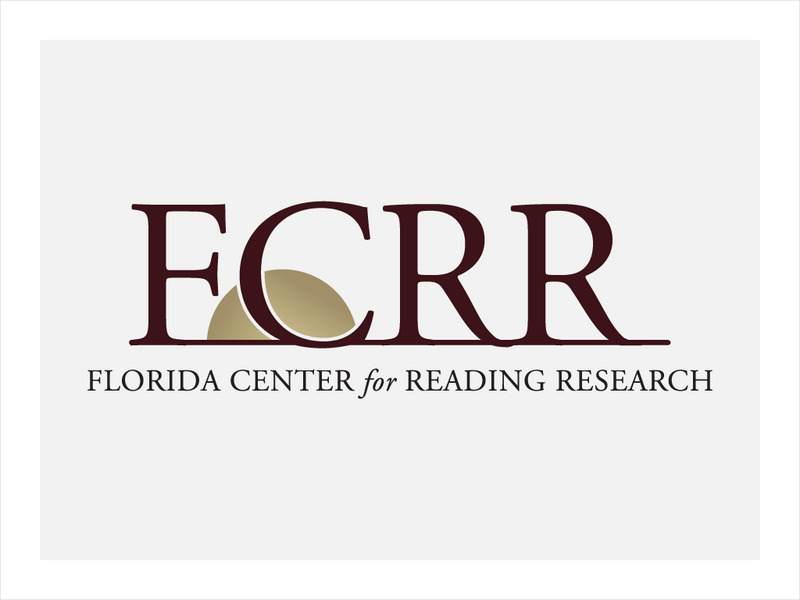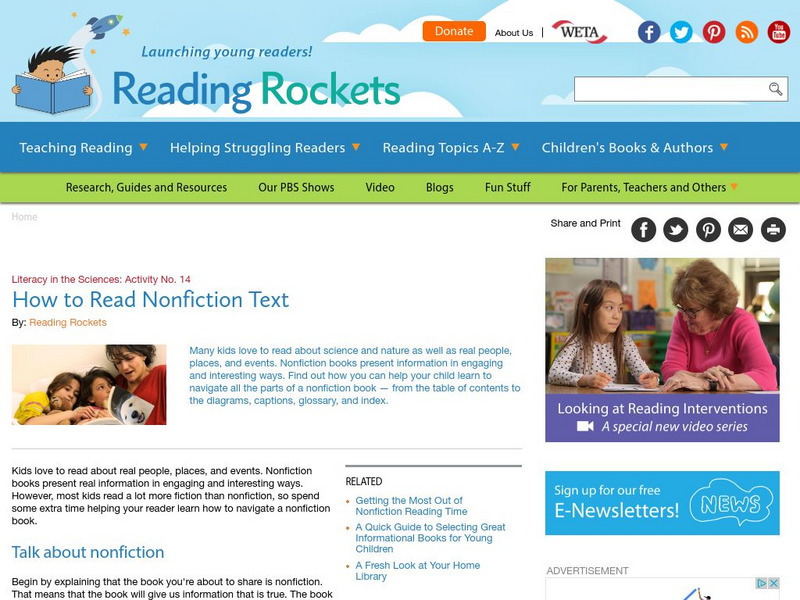Read Works
Read Works: Explicit Information 1st Grade Unit
[Free Registration/Login Required] A two-lesson unit in which students learn how to identify explicit information in both fiction and non-fiction texts. The lessons utilize the books Frogs by Gail Gibbons and Stellaluna by Janell Cannon....
Read Works
Read Works: 1st Grade Lesson: Classifying Texts
[Free Registration/Login Required] A lesson in which students use the books Froggy Goes to School by Jonathan London and Life Cycle of a Frog by Angela Royston to learn to classify texts as fiction or nonfiction. Lesson includes direct...
Read Works
Read Works: Grade 2: Three Lesson Unit: Genre
[Free Registration/Login Required] A series of three lesson plans designed to teach students to compare and contrast fiction and non-fiction, identify the characteristics of non-fiction, and use guide words to locate topics in an...
ReadWriteThink
Read Write Think: Predicting and Gathering Information With Nonfiction Texts
Contains plans for eight short lessons that introduce nonfiction texts to second grade students. In addition to objectives and standards, this instructional plan contains links to sites used in the lessons as well as assessment and...
ReadWriteThink
Read Write Think: Weather: A Journey in Nonfiction
Questions about weather clear up when students use what they learned from their books to create a presentation to share with the rest of the class.
Read Works
Read Works: Focus on Scientists
[Free Registration/Login Required] This nonfiction article shares information about different types of scientists. This passage is a stand-alone curricular piece that reinforces essential reading skills and strategies and establishes...
Read Works
Read Works: Learning About Your World
[Free Registration/Login Required] An informational text about how the five senses help people learn about their world. A question sheet is available to help students build skills in reading comprehension.
ReadWriteThink
Read Write Think: Writing Reports in Kindergarten
Lesson which provides three types of reports for early elementary young scholars to share. These allow young students to see themselves as writers with something useful to contribute from an early age.
ReadWriteThink
Read Write Think: Reading/writing About Whales Using Fiction and Nonfiction Texts
Students will have a whale of a good time in this lesson in which they use fiction and nonfiction texts to write a letter to an online scientist.
ReadWriteThink
Read Write Think: Writing and Publishing Book Reviews
This lesson plan outlines classroom methods to teach both how to evaluate and how to write book reviews. Included in the lesson plan is an overview, practice, objectives, resources, preparation, and more.
Scholastic
Scholastic Teaching Resources: Five Finger Facts [Pdf]
From Just-Right Reading Response Activity Sheets for Young Learners, this graphic organizer can be used when students read informational texts. As responses to nonfiction, students will write the following information about their...
Reading Rockets
Reading Rockets: The Foundations for Reading
What are the foundations for reading? Come and explore this informative article to discover the answer to this question.
Starfall
Starfall: Plays, Fiction, Nonfiction
An index of links to six fiction storybooks, eight nonfiction books, and three plays. Each book has pictures and audio that will allow students to click to hear sentences or individual words as they read along. Links to three different...
BBC
Bbc: Skillswise: Types of Text
How can you tell if a text is descriptive, informative, instructional or persuasive? This BBC Skillswise tutorial teaches you how with a factsheet, worksheet, quiz, and game.
Florida Center for Reading Research
Florida Center for Reading Research: Fiction and Nonfiction Sort [Pdf]
A lesson plan in which young scholars look at different books, write their titles, and sort them according to whether they are fiction or nonfiction. Materials are included.
Florida Center for Reading Research
Florida Center for Reading Research: Narrative Text Structure: Retell Wheel
A lesson plan in which students read a narrative text and then turn a question wheel to answer questions about the characters, setting, conflict, and plot. Materials are included.[PDF]
Florida Center for Reading Research
Florida Center for Reading Research: Narrative Text Structure: Sequence a Story [Pdf]
A lesson plan in which students read a narrative text and write the main events of the story on sentence strips. Materials are included.
Florida Center for Reading Research
Florida Center for Reading Research: Narrative Text Structure: Retell Ring [Pdf]
A lesson plan in which students read a narrative text and answer questions about the plot. Materials are included.
Florida Center for Reading Research
Florida Center for Reading Research: Narr. Text Structure: Picture the Character
A lesson plan in which students read a narrative text and complete a graphic organizer to illustrate and write characteristics of one of the characters. Materials are included.
Florida Center for Reading Research
Florida Center for Reading Research: Character Characteristics
A lesson plan in which students read a narrative text and complete graphic organizers to analyze a character. Materials are included. [PDF]
Other
Balanced reading.com: Decoding
What is decoding? Use this site to find the answer to this important question. This website focuses on a balanced reading approach to learning.
Reading Rockets
Reading Rockets: How to Read Nonfiction Text
Kids love to read about real people, places, and events. Nonfiction books present real information in engaging and interesting ways. However, most kids read a lot more fiction than nonfiction, so spend some extra time helping your reader...
Starfall
Starfall: Things That Can Go
This interactive nonfiction ebook focuses on things that can go. Children can choose to read independently or listen to each sentence read to them.
Starfall
Starfall: Come Play With Me
This interactive nonfiction ebook focuses children playing. Students can choose to read independently or listen to each sentence.





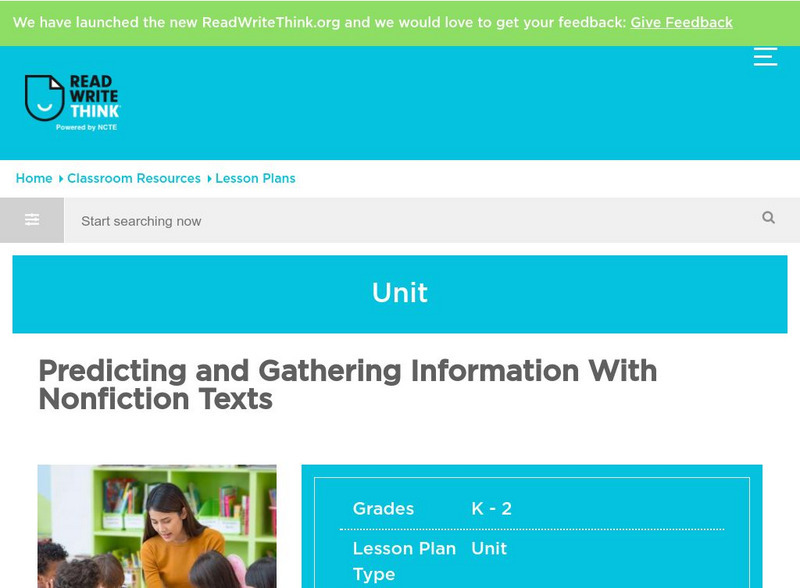
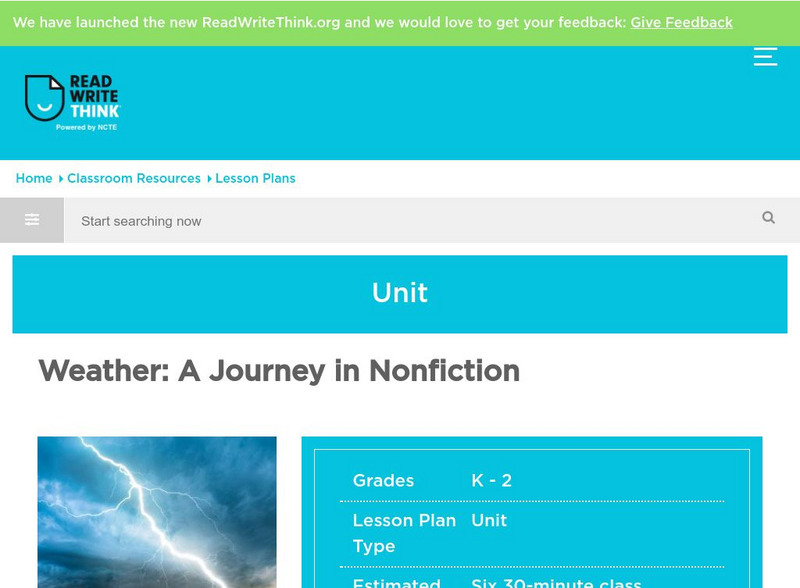


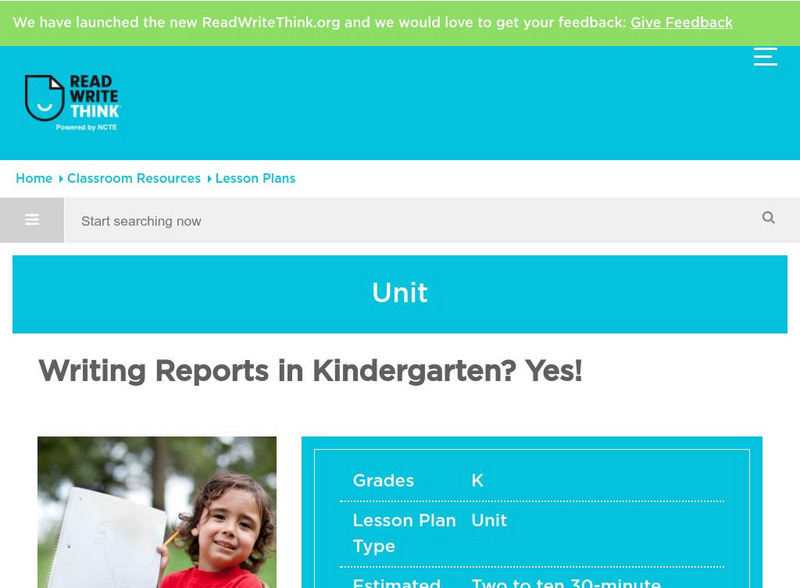


![Scholastic Teaching Resources: Five Finger Facts [Pdf] Graphic Scholastic Teaching Resources: Five Finger Facts [Pdf] Graphic](https://content.lessonplanet.com/knovation/original/261454-1ed71ed4b96b74111872432db98b51cc.jpg?1661510815)


![Florida Center for Reading Research: Fiction and Nonfiction Sort [Pdf] Lesson Plan Florida Center for Reading Research: Fiction and Nonfiction Sort [Pdf] Lesson Plan](https://content.lessonplanet.com/knovation/original/509105-4469283d2301f2d80ae09183a55b8e2c.jpg?1661786967)

![Florida Center for Reading Research: Narrative Text Structure: Sequence a Story [Pdf] Lesson Plan Florida Center for Reading Research: Narrative Text Structure: Sequence a Story [Pdf] Lesson Plan](https://content.lessonplanet.com/knovation/original/509124-8f3f3c440d6b6d200b605de1c46e8d0a.jpg?1661786936)
![Florida Center for Reading Research: Narrative Text Structure: Retell Ring [Pdf] Lesson Plan Florida Center for Reading Research: Narrative Text Structure: Retell Ring [Pdf] Lesson Plan](https://content.lessonplanet.com/knovation/original/509125-ce2373a22ec043b4e3169ca469cf6012.jpg?1661786935)
